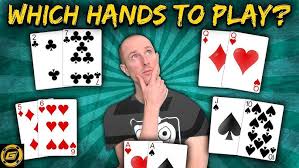
Introduction to Poker Sequences
In poker, understanding sequences of cards is essential for improving your play and making informed decisions during a hand. Poker sequences refer to the progression of betting actions, community cards, and how the cards interact with one another as the game advances. These sequences, whether related to hand rankings, betting patterns, or the community cards on the table, provide critical insights into the strength of your hand and the potential hands of your opponents. By recognizing these sequences and knowing how to interpret them, you can significantly enhance your strategy and increase your chances of success at the table.
The Importance of Card Sequences
A key element of poker strategy is understanding card sequences, particularly when it comes to making a straight or assessing the strength of your hand. A straight is a five-card sequence of consecutive cards, regardless of suit (e.g., 5-6-7-8-9). In Texas Hold’em and Omaha, recognizing potential straight sequences on the community cards or your hole cards is crucial. If the board shows consecutive numbers, such as 7-8-9, your hand might be part of a straight sequence, increasing your chances of winning. Similarly, understanding the potential for others to form straights helps you adjust your bets and make decisions about whether to bet, raise, or fold.
Betting Sequences and Their Significance
Poker is as much about reading betting sequences as it is about understanding card combinations. Betting patterns, such as check-raising, slow-playing, or over-betting, can indicate the strength or weakness of an opponent’s hand. For example, if a player raises aggressively after a low-flop sequence, it could indicate they have a strong hand. On the other hand, if a player is passive and only calls small bets, they might be playing a marginal hand. Understanding how betting sequences correlate with specific hands can give you an advantage in predicting your opponent’s behavior and responding strategically. Keeping track of these patterns will help you refine your decisions and stay one step ahead in the game.
Recognizing Community Card Sequences
In games like Texas Hold’em or Omaha, the community cards play a significant role in determining your hand and evaluating sequences. As the board is revealed, players must assess how the community cards interact with their hole cards. If the flop, turn, or river creates a potential sequence of cards that could form a straight or flush, it’s important to recognize these possibilities early. For example, a board showing a sequence of hearts (e.g., 7♠, 8♠, 9♠, 10♠) could suggest that someone has completed a straight or is one card away from a flush, requiring you to adjust your strategy accordingly. Understanding these community card sequences helps you stay alert to potential threats and capitalize on opportunities.
How Sequences Influence Hand Reading
One of the most valuable skills in poker is hand reading, which involves deducing what kind of hand your opponents might have based on their betting behavior and the community cards. Sequences play a significant role in hand reading because they help you predict the possible hands your opponents are holding. If an opponent is raising aggressively in a sequence where straights or flushes are possible, they may have completed such a hand. On the other hand, if they are passive in a sequence that should benefit them, they may be holding weaker cards. By studying the sequences of cards and betting actions, you can narrow down your opponents’ ranges and make more accurate predictions about their hands, allowing you to adjust your strategy accordingly.
Conclusion
Understanding poker sequences is a fundamental aspect of mastering the game. Whether it’s recognizing a potential straight or flush, interpreting betting patterns, or analyzing the community cards, being able to read and react to sequences can significantly improve your poker decisions. By incorporating this knowledge into your strategy, you can make more informed choices that increase your chances of winning. Paying attention to both the sequences of cards and betting actions will allow you to anticipate your opponents’ moves, refine your hand-reading skills, and adjust your strategy for better outcomes at the poker table.


